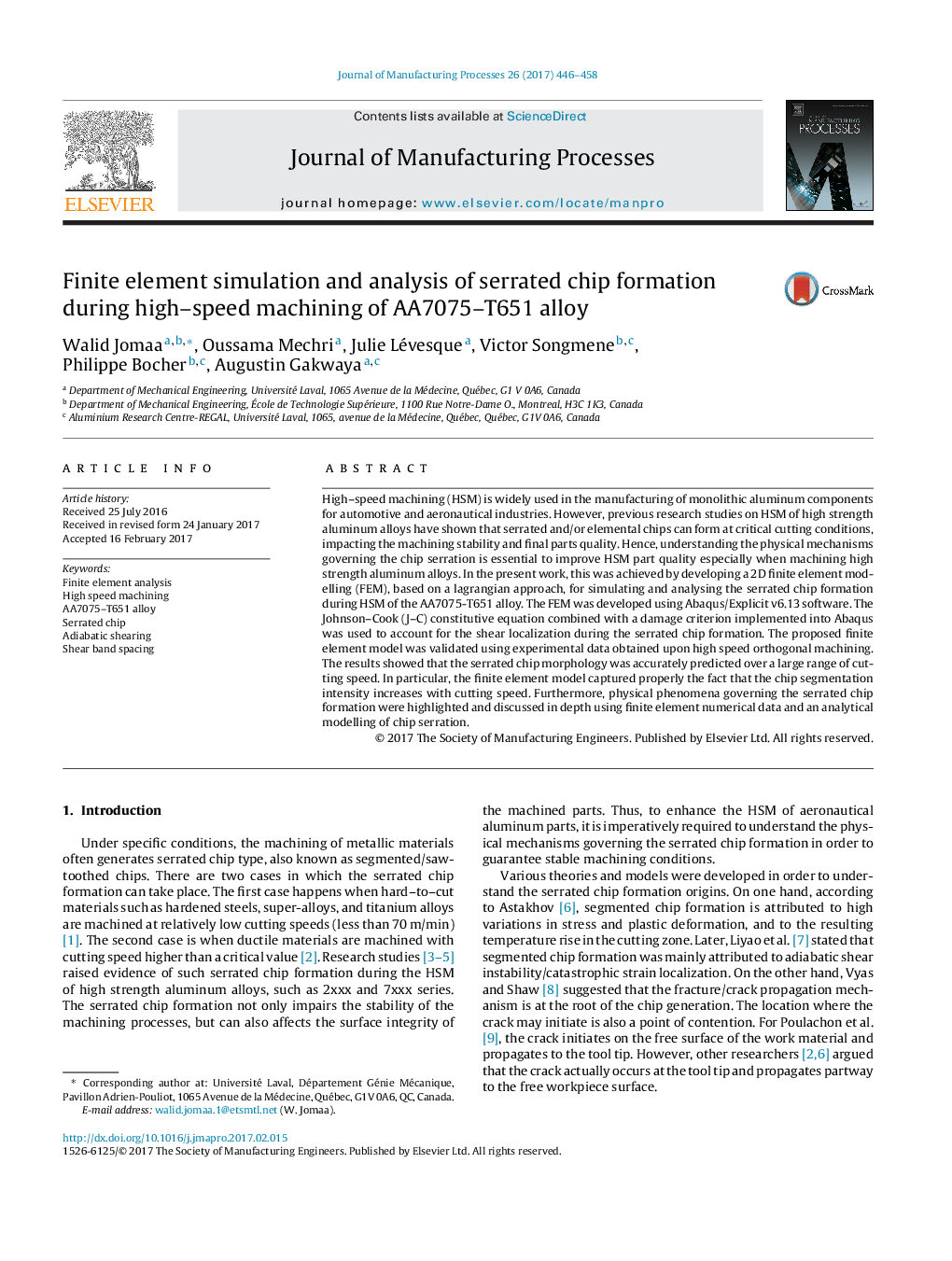| Article ID | Journal | Published Year | Pages | File Type |
|---|---|---|---|---|
| 5469310 | Journal of Manufacturing Processes | 2017 | 13 Pages |
Abstract
High-speed machining (HSM) is widely used in the manufacturing of monolithic aluminum components for automotive and aeronautical industries. However, previous research studies on HSM of high strength aluminum alloys have shown that serrated and/or elemental chips can form at critical cutting conditions, impacting the machining stability and final parts quality. Hence, understanding the physical mechanisms governing the chip serration is essential to improve HSM part quality especially when machining high strength aluminum alloys. In the present work, this was achieved by developing a 2D finite element modelling (FEM), based on a lagrangian approach, for simulating and analysing the serrated chip formation during HSM of the AA7075-T651 alloy. The FEM was developed using Abaqus/Explicit v6.13 software. The Johnson-Cook (J-C) constitutive equation combined with a damage criterion implemented into Abaqus was used to account for the shear localization during the serrated chip formation. The proposed finite element model was validated using experimental data obtained upon high speed orthogonal machining. The results showed that the serrated chip morphology was accurately predicted over a large range of cutting speed. In particular, the finite element model captured properly the fact that the chip segmentation intensity increases with cutting speed. Furthermore, physical phenomena governing the serrated chip formation were highlighted and discussed in depth using finite element numerical data and an analytical modelling of chip serration.
Keywords
Related Topics
Physical Sciences and Engineering
Engineering
Industrial and Manufacturing Engineering
Authors
Walid Jomaa, Oussama Mechri, Julie Lévesque, Victor Songmene, Philippe Bocher, Augustin Gakwaya,
